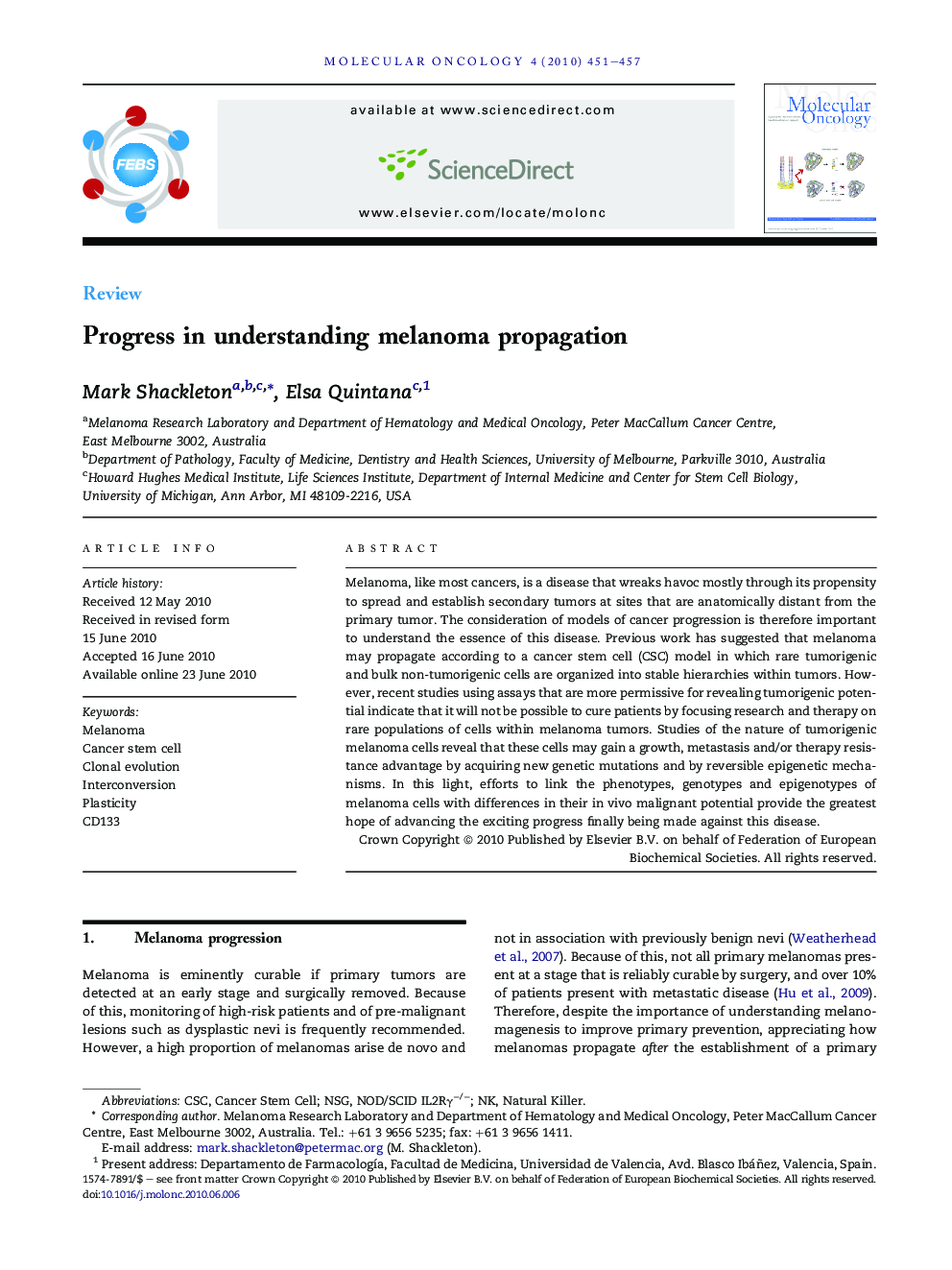| Article ID | Journal | Published Year | Pages | File Type |
|---|---|---|---|---|
| 2145697 | Molecular Oncology | 2010 | 7 Pages |
Melanoma, like most cancers, is a disease that wreaks havoc mostly through its propensity to spread and establish secondary tumors at sites that are anatomically distant from the primary tumor. The consideration of models of cancer progression is therefore important to understand the essence of this disease. Previous work has suggested that melanoma may propagate according to a cancer stem cell (CSC) model in which rare tumorigenic and bulk non-tumorigenic cells are organized into stable hierarchies within tumors. However, recent studies using assays that are more permissive for revealing tumorigenic potential indicate that it will not be possible to cure patients by focusing research and therapy on rare populations of cells within melanoma tumors. Studies of the nature of tumorigenic melanoma cells reveal that these cells may gain a growth, metastasis and/or therapy resistance advantage by acquiring new genetic mutations and by reversible epigenetic mechanisms. In this light, efforts to link the phenotypes, genotypes and epigenotypes of melanoma cells with differences in their in vivo malignant potential provide the greatest hope of advancing the exciting progress finally being made against this disease.
